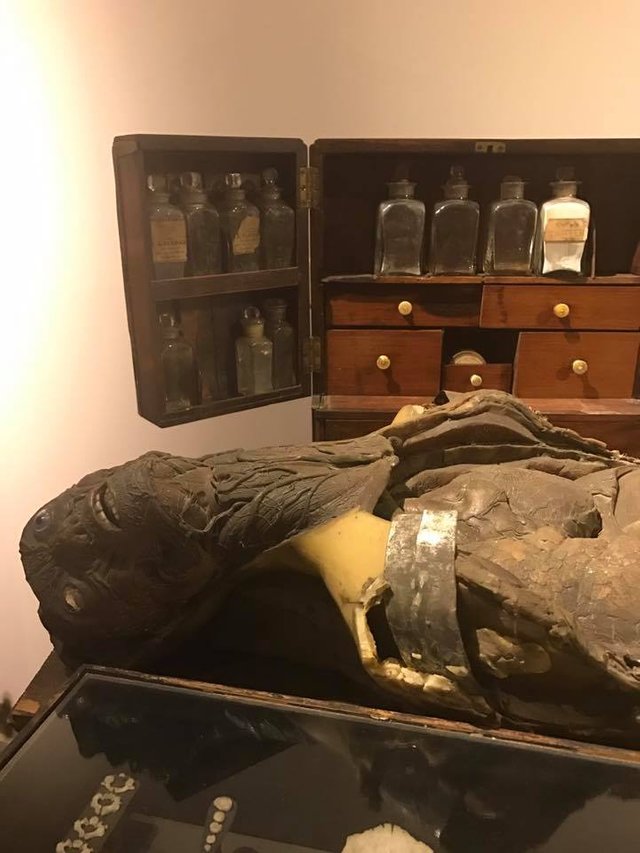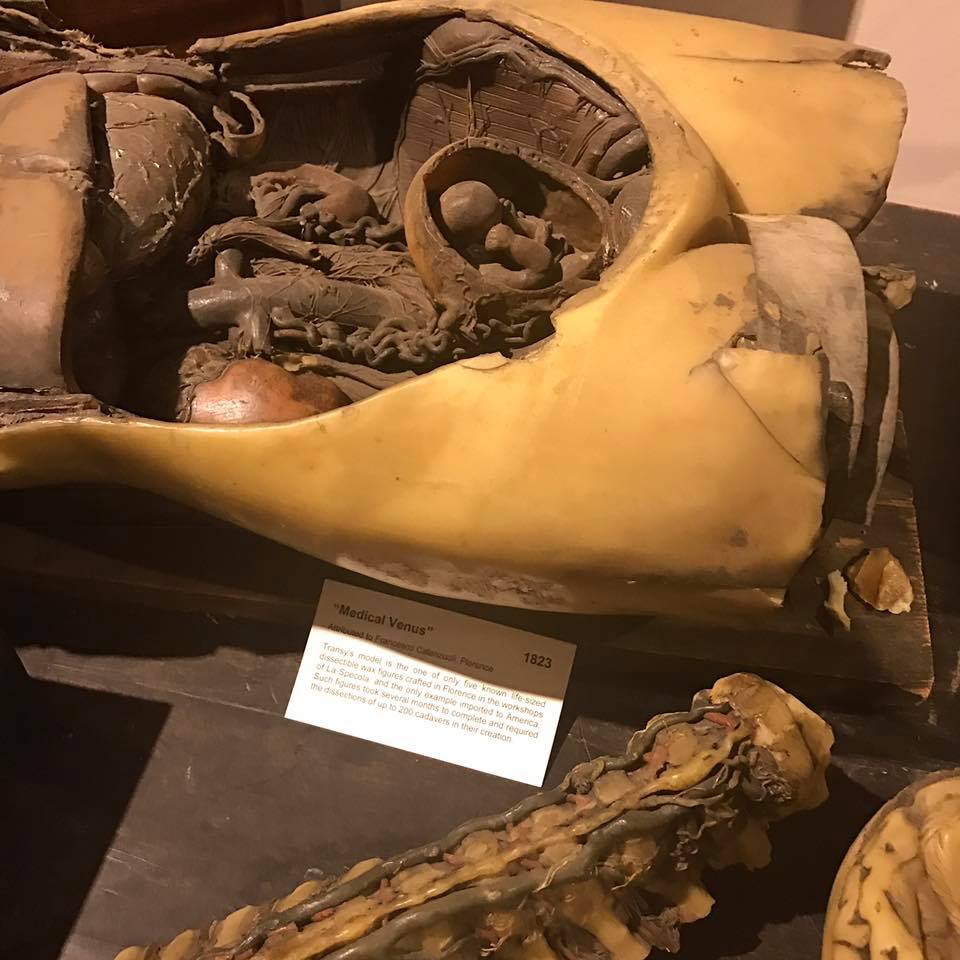The Last of Her Kind
I can't take my eyes off of her. She is a woman made of wax and displayed, as though in awkward repose, on her back. She is ghastly. Her skin has long ago melted away, leaving bulging gray eyes and overlapped lines of facial musculature. Her surface has been almost completely scorched to a mottled charcoal-black. She is filleted open, and what's visible of her dusty organs along with a developing fetus has also been burned. She has no arms and no legs. She is a survivor not just of fire but of time. She is one of the last of her kind--a Medical Venus or Anatomical Venus--a literal remnant of scientific discovery.

The dissectible Venuses were once commissioned by physicians to serve as life-sized anatomically correct models of the female body. When grave-digging became increasingly dangerous for health and legal reasons, and because it was déclassé to operate on the cadaver of a woman anyway, 18th century artists were commissioned to create wax versions. The Venuses were often erotically posed like deceased women of leisure or women of the night. Their expressions suggested ardor. They were mostly nude and even fitted with human hair. Pearls were draped at their throat, and makeup applied over their supple wax skin to suggest the blush of flesh, and perhaps, a hint of desire. They were often depicted as pregnant. With some, you could see portions of brain. Others became assistants to their own surgery and lifted the flayed flaps of their skin back to reveal their ribs and intestines. Legend has it that the Medical Venuses appeared to be so lifelike, a soldier in Napoleon's army raped one, breaking her limbs in the process.
After the fire that ravaged Transylvania University's Medical Hall in 1854, their Medical Venus, salvaged but now torched, was tucked out of sight for over a century until she was discovered and added to the Monroe Moosnick Medical and Science Museum, along with an assortment of other oddities collected primarily from the 18th-19th centuries, including a four foot hairball extracted from a cow (or buffalo), extinct animals, fetal skeletons, early Polaroid film, a jar of "meat rain," and early implements for generating electricity and measuring the distance of stars. I am not shy about ogling the blackened Medical Venus, but not unlike the Oracle at Delphi, she does not exactly return my gaze, stares instead at nothing and everything, her lidless eyes permanently fixed on something otherworldly beyond the limits of human sight.

For some reason, she reminds me of the stories of failed experiments by Medieval alchemists. There were four phases of turning a base metal into a noble metal, such as turning lead into gold, and each of them required fire. The first phase was called the Nigredo, or the 'Putrefecation' or the 'Blackening' stage. Whatever elements the alchemists had assembled in their labs were scorched to a uniform black. It wasn't a pretty phase but it was necessary to prime the lead that was to be transmuted into gold. Carl Jung was fascinated in particular by 16th century alchemists who were beginning to stray from pure physics and saw the human body as a vessel for alchemical change. He transposed their discoveries onto his own findings in psychology and re-termed the Nigredo as "The Dark Night of the Soul." It is the phase where a person finds themselves in a temporary depression and must delve into the basement of their subconscious to grapple with whatever unkempt neuroses float to the surface to be healed. This process is what Jung called doing "Shadow Work."
The Dark Night of the Soul can be triggered by any singular event or combination of life circumstances, such as a bad breakup, a death of a loved one, the loss of a job, moving to a new town, or even general anxiety and depression over the state of the world. This period can last for months or up to years and leave a person feeling like they're losing their minds, like they're an automaton version of themselves, going through the motions of living but feeling inside as though they've been splayed open on an operating table for all to see--exposed.
What keeps people from succumbing to total system failure? Perhaps it is the same impulse that kept the alchemists at work, starting from scratch at the Nigredo over and over again, tweaking their process with each attempt. Although there is no proof that anyone actually transmuted lead into gold, there were always rumors circulating that someone a world away had done it. And in the seventies, Soviet physicists actually did--on accident. And in 1980, supposedly in an attempt to discover the properties of bismuth, Glenn Seaborg, a Nobel Laureate in chemistry did the same. Now we know that not only is it possible to turn lead into gold but the answer is surprisingly simple--there are already traces of gold present. To completely oversimplify the process, you just have to go in and get it. The alchemists were onto something but it was the collective record of what they'd NOT yet achieved but continued to try that makes their work so precious so many years later.
Likewise, despite appearances, the hairless and haggard remains of this Medical Venus is miraculous. She is a rare find. But her beauty is in the mind--has transcended what we can see and is instead found in what she represents. I mean, come on--she's still here. And if a woman made mostly of wax can survive such tragedy, obscurity, and the dark century of night to follow, what miracle might a woman made of actual blood and skin and hair and tears and pores and gut and spine leave in her wake once she too survives the flame?

Congratulations @biancals! You have completed some achievement on Steemit and have been rewarded with new badge(s) :
Click on any badge to view your own Board of Honor on SteemitBoard.
For more information about SteemitBoard, click here
If you no longer want to receive notifications, reply to this comment with the word
STOP